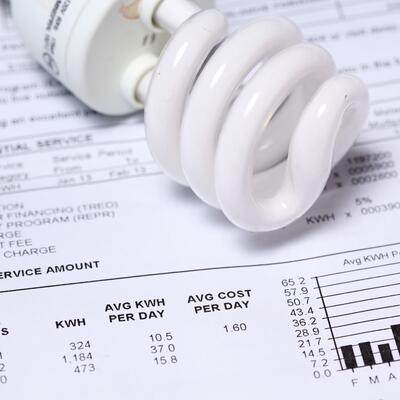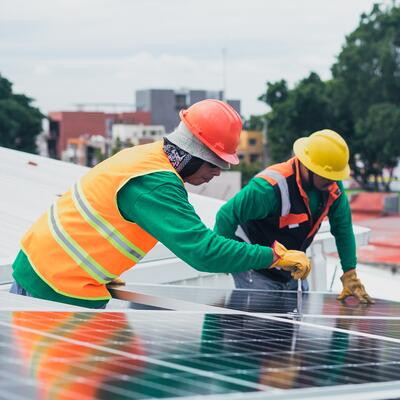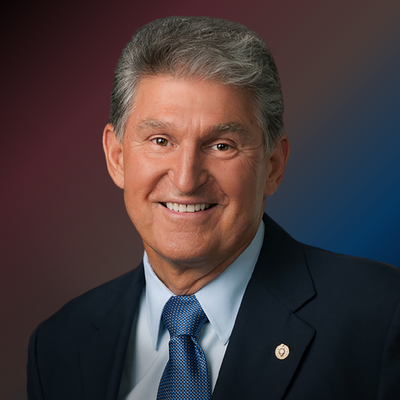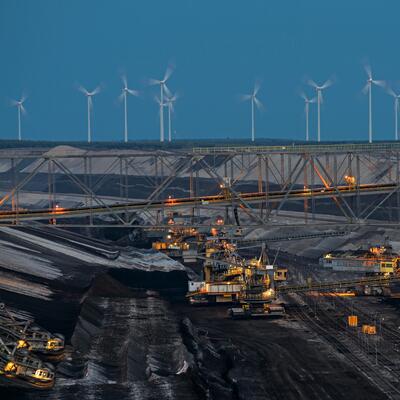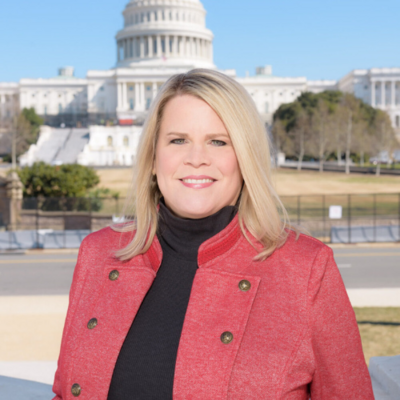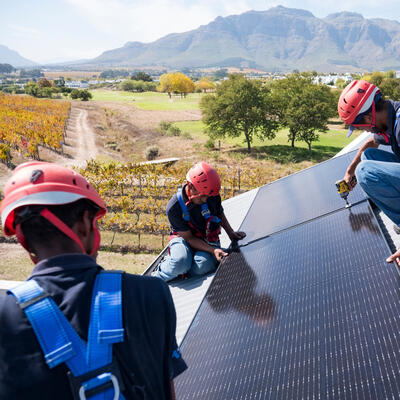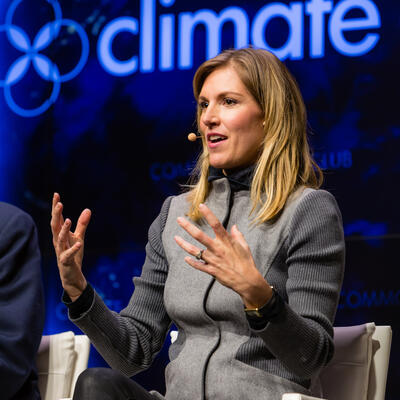
Cloudy Days for Solar?
Guests
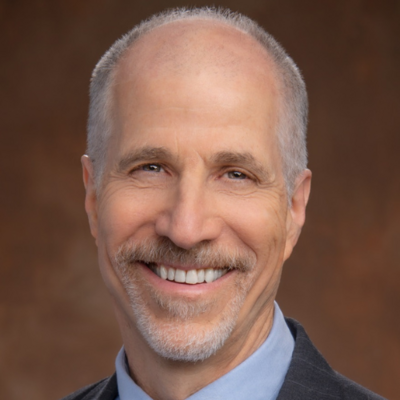
Severin Borenstein

Scott Jacobs

Lynn Jurich
Summary
When the U.S slapped 30 percent tariffs on imported solar panels, headlines heralded bad times ahead for clean energy in this country. But the stock prices of solar installers increased because the hit could have been worse. Solar entrepreneur and advocate, Jigar Shah, said it was “good news.” Our guest and professor from University of California Berkeley, Severin Borenstein said, “there's no question, this is a policy that was designed to make renewables more expensive because it doesn't make any economic sense beyond that.” Listen to a conversation about the future of solar.
This program was recorded live at The Commonwealth Club in San Francisco on February 21, 2018.
Full Transcript
Announcer: This is Climate One, changing the conversation about energy, economy and the environment.
The price of solar power has declined dramatically in recent years. That’s good news for homeowners, the environment and the economy.
Scott Jacobs: The cheapest way to solve emissions is energy efficiency and it's also the largest source of jobs in the energy sector.
Announcer: But recently, the United States slapped a thirty percent tariff on imported solar panels – a move that could cost thousands of American jobs and billions of dollars in future solar investments.
Severin Borenstein: There's no question, this is a policy that was designed to make renewables more expensive because it doesn't make any economic sense beyond that.
Announcer: Cloudy days for solar? Up next on Climate One.
Announcer: Are there dark days ahead for solar energy?
Welcome to Climate One – changing the conversation about America’s energy, economy and environment. Climate One conversations – with oil companies and environmentalists, Republicans and Democrats – are recorded before a live audience, and hosted by Greg Dalton.
Renewable power now accounts for the lion’s share of new electrical generation around the world. Even Saudi Arabia’s Aramco, the world’s largest oil producer, is considering investing billions to become a renewable energy powerhouse. Here in the states prices are coming down, bringing solar within reach of more and more homeowners. But will the new U.S. tariff put the brakes on what looked like a promising trend towards greener energy?
On today’s program, we welcome three experts. Severin Borenstein is a professor at the Haas School of Business at the University of California Berkeley. Scott Jacobs is CEO of Generate Capital, a clean energy investment firm. And Lynn Jurich is the CEO of Sunrun, a company that installs solar on rooftops across the country.
Now, our conversation about the future of solar power. Here’s Greg Dalton.
PROGRAM PART 1
Greg Dalton: I want to begin with some reactions from another solar company and get his comment here. We have a person who runs a solar company, it’s really a roofing company, Jim Petersen, CEO of PetersenDean spoke out against the tariffs on CNN.
[Start Clip]
Jim Petersen: What Trump did by passing this tariff is raise renewable energy rates across the country. Period. Full stop. It's a great headline, it's a promise on a campaign speech. But ultimately I think the consumer will be hurt.
[End Clip]
Greg Dalton: Severin Borenstein, will prices go up, is this gonna be bad for consumers the 30% tariffs on imported solar panels?
Severin Borenstein: Sure. Prices are definitely going to go up. The question is how much are these going to be tariffs that are easily evaded like the last round or are these going to bite more. The fact is though that solar is continuing to come down in cost. And so, even as it is going to push up the cost it isn't going to make a huge difference in the economics of solar panels. But there's no question, this is a policy that was designed to make renewables more expensive because it doesn't make any economic sense beyond that.
Greg Dalton: But let’s be clear, I mean, it’s easy to say, oh Trump did a bad, took a swing at renewables. But this started under President Obama with some companies in Oregon, you know, this is not, you know, doesn't fit that, San Francisco liberals doesn't fit that narrative of Trump swinging at the fossils, right?
Severin Borenstein: This is a bipartisan bad policy.
[Laughter]
Greg Dalton: Okay. Lynn Jurich, between 2016 and 2017 there were 10,000 jobs lost in solar according to the solar foundation. That's a 4% drop in employment. So is this gonna put a dip, further dip in solar employment in this country?
Lynn Jurich: I mean, there's no question that this decision was unequivocally bad for jobs. I think there are, you know, 97% of scientists say that climate change is caused by humans and I think 99% of economists would say this is bad for jobs. I think similar to Severin’s point, the cost declines though are so significant that they will outweigh this. So I think of this as a short-term nuisance, but in 10 years I don't believe this will be a part of the story.
Greg Dalton: Okay. But we’ll talk about the short-term thing. So the prices are falling, this is a little bit of a push, wind in the other direction but still the downward trend in prices. Scott Jacobs, will this bring manufacturing to the United States that is currently offshore?
Scott Jacobs: No. We have, you know, we've seen off-shoring of manufacturing of all sorts of industrial equipment over the last 30, 40 years due to pure economic factors and comparative advantage of other economies to build these kinds of equipment and other industrial applications. And we don't see those jobs coming back to the United States in any significant way despite maybe some of the headlines in the media and some of the tweets from our president.
Greg Dalton: Lynn Jurich, there’s gonna be some shakeout, who’s gonna be hurt, what types of jobs, is this gonna be the installers, people working in sales, people working in manufacturing the frames, you know, they go in the roofs. Where’s it gonna be?
Lynn Jurich: Yes, you are right. So there were about 500 jobs may be in manufacturing that this could help versus about 200,000 downstream. So that's everything from installing, financing, selling it to consumers and those 200,000 will be the ones that will be injured, you know. So again, I do see it though as short-term. I think the other things and trends that could help is the states could step up. So what we've seen happen in the past is sometimes when there are these policies that are so wildly unpopular and so against what the people want, the states come in and step up similar to what they did when we pulled out of Paris. And so I'm optimistic that in many places the states will rally that's where more of the action is really happening in terms of adoption for consumers. So counterintuitively, this could be a positive.
Greg Dalton: So tell us, most of the power that comes into our homes, into our cars is regulated at the state or local level, not so much the federal level, energy is really a regional local policy issue, Lynn Jurich, tell us the story of Nevada. There was SolarCity, a competitive o yours, founded a part of Elon Musk and now Tesla, and then a big utility backed by Warren Buffet with the battle and tell us how that's played out.
Lynn Jurich: There's a lot in this story and I think it's worth it because we’ll probably spend some time about how rooftop solar is compensated. So it might be worth, you know, taking a quick step back and educating people on how that works. So what happens for a homeowner as you install the solar panels on your roof, your home uses about 70% of that power and about 30% of that power flows to your neighbor's house. So the big question is, how much should you get paid for that power that you’re selling to your neighbor? Should you be get paid the same price your neighbor would buy it from the utility? Or should it be something much lower? The policy that we put forth in this country in 40 states is called net metering and it's a very effective policy.
What that does is it allows that homeowner to get retail credit for the power that is going to their neighbor’s house. It makes a lot of sense because it doesn't have to touch the transmission and distribution grid, the energy company doesn’t have to buy it, it makes the equipment last longer and frankly in many times the system when it's producing during the daytime, that's the time when the power is the most expensive. And so the utility doesn't have to buy really expensive peaking power at that time. The second benefit to it is that simple for customers to understand. One of the things we get into trouble with oftentimes is we make these rate structures that are impossible for people to understand, when am I gonna know if my system is producing more and exporting it to the grid. If you make it simple, it's the same price I’m buying it for, the policy works. So this has been in place in as I said 40 states.
In Nevada, the regulators decided to investigate it a bit. There's this common, I would say, I would go so far as to say propaganda, that there's a cost shift for homeowners who are getting solar and it’s a cost to everybody else in the system. So the regulators took a look at this, you know. The study that came back showed that there was actually a $36 million cost benefit to everybody in the system, again, because the utility doesn’t have to buy as much expensive peaking power, the transmission infrastructure lasts longer. Then there was another study done and that study looked very, very, very narrowly. They didn't include a lot of the benefits and that study found that there was actually this $36 million cost for the homeowners that, you know, spread out across the entire system. But at the same time they came out with that they said, but we didn't account for all of these long-term costs and environmental costs and the job benefits. And those are real but they're hard to calculate so we’re just going to go with this and whacked it back.
And so the only value you’re going to get for that exported power is the same price that we’re gonna buy it from a power plant, forgetting that there's a lot of expense in actually transferring that power out to the home. What that did was it made it not cost effective for homeowners to switch over to solar. There were 3000 jobs in the state lost overnight. And what happened was, 18 months later it was so wildly unpopular that the legislator had to overturn it and put it back in place. And this new commission and these legislators are saying, wait we should look at all these costs. There are all these benefits. Let's reinstate it and figure this out. And so we lost 18 months, we lost 3000 jobs and we just went backwards. It's now resolved and recovered, but it's an interesting story for a lot of reasons.
Greg Dalton: That come back in Nevada happened with the support of Republican legislators in the Nevada Legislature. Severin Borenstein, we just saw a big tax bill go through but tell us how clean energy sort of fared in this big tax revision that just happened.
Severin Borenstein: Well, it didn't change much. I actually have to respond to some of the things Lynn just said because I have a very different take on the rooftop solar view. There have been studies that have been looked at, dirty energy basically and on that comparison. That's not the comparison we should be making of course. We should be looking at rooftop solar versus grid scale solar and wind. And there have been good academic studies that have looked at how much is rooftop solar really saving and it does save. It saves on the distribution line losses because you don't lose power and it saves on some investment in the grid. But when you do that and you look at the price difference between grid scale solar and wind and rooftop solar, the difference between grid scale and rooftop is massively larger than the benefits of putting on rooftop.
You know, since November 9, 2016, I have realized that we have to be clear on when we’re having major disagreements and minor disagreements. We are all on the same page that we have to be moving towards reducing greenhouse gases. I think that there's a more efficient way to do it. These policies, net metering is a subsidy to rooftop solar. I know Lynn doesn't agree with that, but the studies that have looked at how much is it actually saving in grid, how much is it actually saving in line losses just don't even come close to the cost difference that we still have. We have a lot of subsidies for both and I think we should because we’re not pricing greenhouse gases and that's the major subsidy that's going on right now. But I worry that what we’re doing by emphasizing rooftop solar is raising the cost of moving away from fossil fuels which is what we need to do. So there are people who think that this is going to play a major role going forward putting it on residential rooftops and I think that that is not where we should be focused.
Greg Dalton: So are you saying that people who do rooftop solar are making bad economic decision?
Severin Borenstein: They certainly are not making bad economic decisions in California. They’re gonna save money because California has amazingly high electricity rate. But the actual cost including the pollution cost of electricity in California is very low. So the reason we have such a big gap between the cost and what we pay is because we are paying for energy efficiency programs, for those investments we made early on and very expensive renewals which were a good idea, which we’re still making in research and development. All of that and the gap that we have to fund the 30% of residential customers who are in low income programs, which is also a good idea.
But what that means is that our average residential rate for people who aren't on the low income programs which is about 22 cents a kilowatt hour is massively higher than the true cost including the pollution cost which is about 7 cents a kilowatt hour. And that makes it very economic to install rooftop solar.
Greg Dalton: Lynn Jurich.
Lynn Jurich: Yeah, I think this question, what we need to think about is, where is our system going over the next 20 years. We right now are on a utility investment binge. That's why the cost is going up so high. If I look at the last 10 years, what has happened with retail energy cost? Look at California but look at Arizona, look at South Carolina; in these markets the cost to the consumer has increased 30% over the last 10 years. At that same period of time, the cost to make that power to generate the power is down 50%. So that’s how much inefficiency is being disguised in the system right now. And we are still on that investment binge going forward because our grid is underinvested and we have more outages in the U.S. than in any other developing country.
And so what's going to happen is over the next 20 years we’re expected to spend double the amount we spent historically. But people aren’t buying more energy so that price has to spread out across everybody else. So we're going to have massive rate inflation. So what do we need to do? We need to change that system. How do you make that system more efficient? You make that system more efficient by putting the power out on the rooftop, putting the battery in the garage so that you can use the system at night and you introduce competition, which is really what we do because I go to work every day and think about how I drive my cost out so in that same 10-year period, we at Sunrun have driven 70% of our costs out to install while the utility is charging 30% more.
Greg Dalton: Scott Jacobs, let’s get you in here. We have a difference of centralized model versus distributed model where energy is generated close to where it’s used. Where do you fall down on this debate about the big industrial model or the little rooftop model?
Scott Jacobs: Well, it’s always dangerous to paint with a broad brush and as you said very clearly in your earlier question, a lot of the regulations are done at a state and local level, and we talk a lot about federal policy very often, but actually the policies that drive the energy systems as you said are much more local. And so whether you're talking about centralized generation or distributed generation, you know, big monolithic dirty energy plants or small renewable rooftops, you know, you have to really think about it at a local level.
And so the question is, are we getting economies of scale and cost reductions due to large scale big power plants, or are we getting economies of scale from large-scale manufacturing. And as we've seen in things like personal computers, consumer electronics, we've seen amazing cost declines over the last 10, 20 years. Those cost declines having absolutely nothing to do with this discussion here, the power sector, are driving power sector economics because of ancillary benefits. So PCs which have microchips are the reason why solar costs have come down in the last 10 years by 92%, 92% right? It's the economies of scale for manufacturing for the entire world's consumption of silicon modules and panels that is driving the costs in solar. And obviously there's a lot of solar consumption, but then creates the benefit of learning from experience that we’re also seeing dramatically improved in the solar market.
Similarly, you know, Lynn mentioned battery storage. Battery storage for the power market is tiny, but battery storage for your phone and other consumer electronics is going crazy in terms of demand, and supply is following that. And we will benefit in the power sector from those scale ups on the manufacturing side that will help distributed generation far more than central-station generation.
Greg Dalton: I didn't realize that until we talked recently that really I thought it was all the electric cars out there that are driving down the cost of car batteries. It’s cell phones that are driving that down. So Scott Jacobs, let's stick with that and help us understand the extraction economics and the manufacturing economics because some energy is extracted, coal comes out of the ground that's extraction, and then there's manufacturing economics. Explain those two paradigms for us and how they get to scale in driving down price.
Scott Jacobs: Well, extraction, you know, again depends on what we’re extracting but let's talk about extracting, you know, natural gas from the ground and the technology intervention that has happened in the last 10 years is hydraulic fracturing, the horizontal drilling that we can now do to pull natural gas resources that were previously inaccessible out. Now, that has been a scale game in terms of lots of drillers that have now driven down the cost because of the increasing demand for that technology. But most of the time when we talk about central-station sort of generation we’re talking about a single power plant that you have to build with a billion dollars. And then you’ve got to build another billion dollars worth of power lines in order to get it to the 10,000 consumers that will make it economical to even build that powerplant in the first place. When Severin talks about, you know, central-station generation versus distributed generation, he's assuming an existing grid. That is not the case when you're talking about new power plants in places like China and that is a very different equation, which is why I keep saying we have to talk about a particular geography, a particular regulatory regime.
But going back to the question of manufacturing scale, we built 10 solar plants, solar manufacturing facilities, sorry, in places like Malaysia and China. Well those 10 manufacturing facilities that are a billion dollars each they’re gonna serve demand for many, many, many, many years across the entire globe and drive down the cost of solar. That is not something you can ever see happen with a single wind farm or a single natural gas generation facility or worse even obviously coal facility. And in those cases not only do you have the large-scale capital expense that you need to do in order to build the facility, you have to remember that in any of these fossil fuels you’re buying the fuel every day to actually produce the power. In the case of solar, that's obviously not the case. You have the sunlight most of the time.
Announcer: You’re listening to a Climate One conversation about solar energy. Coming up: more on the debate over rooftop versus centralized power.
Lynn Jurich: Consumers have no control over these investment decisions that utilities are making. Consumers want to know where their power is coming from. They want control over this.
Announcer: That’s up next, when Climate One continues.
Announcer: We continue now with Climate One and our discussion about clean energy from the sun. Greg Dalton’s guests today are Scott Jacobs of the investment firm Generate Capital, Lynn Jurich who heads up SunRun, and Severin Borenstein of UC Berkeley.
Here’s Greg Dalton
PROGRAM PART 2
Greg Dalton: Severin Borenstein, it sounds like from computers we have gone from mainframe to PCs now handheld, lots of things have gone from a centralized model to a more distributed model, are you defending an old model by saying --?
Severin Borenstein: And lots of things are still made centralized and the right answer is to ask which is less expensive. Lawrence Berkeley Lab does studies of this every year. And their most recent study says that rooftop solar costs about $4 a watt to install, which is way down, it's down from $8 a watt 10 years ago.
Greg Dalton: That’s what I paid 10 years ago foolishly perhaps.
[Laughter]
Severin Borenstein: And grid scale solar is around $2 a watt. Now, that's the installation cost and so, yes, there are big economies of scale in doing that on a large scale basis. Now there are transmission costs and I'll get back to those in just a minute. But the other thing you have to realize is that grid scale solar is a very sophisticated system. They’re built on trackers so they tilt with the sun which you don't do on rooftop, it's not economic to. And they have much higher capacity factors.
So a watt of panel in a grid scale is producing about 30% of the time, whereas a watt of panel on a rooftop is producing in California about 15% to 18% of the time. So it's producing less power. And so when you put all that together and ask how much does it cost to produce at a grid scale solar plant versus a rooftop, it’s costing about three times more to produce on a grid scale -- or less on a grid scale. So then you have to ask, well okay, but it's way out there. How much does it cost to bring it in? And a statistic you often hear is that we’re gonna spend a trillion dollars over the next 20 years to build out the grid. And that's right. And that sounds like a lot of money until you divide it by the kilowatt hours it's gonna carry. And then it comes out to about a penny and a half a kilowatt hour. So where we are right now is grid scale solar is probably on unsubsidized costing about 5 cents a kilowatt hour and it costs probably an extra, extra couple cents a kilowatt hour to get it to your house. Rooftop solar right now, unsubsidized, is costing about 15 cents a kilowatt hour. And so there's a big gap there and it is not gonna be made up by transmission.
Now I just want to be clear, I have nothing against people who decide to put in rooftop solar. If you want to do it, that's great. What I worry about is, we need a massive change in our energy sources and the only way we’re gonna do that is, and we need to do it in the developing world, not just here, and so the only way we’re gonna do that is if we can do it cost-effectively. So there are cases where rooftop solar makes sense. In fact, there are even cases in the United States because if you're at the end of a long distribution line, it makes more sense because there's more cost to bring it to you. But if you look at the great majority of people, it's gonna make more sense to serve them with the centralized solar system or wind system. And the other aspect of it is you can't do that with wind. You’re not gonna have wind at your house.
Greg Dalton: Lynn Jurich.
Lynn Jurich: Yes, so a couple things. I disagree because I think that that treats all the innovation that's happening as static and the inefficiencies of what happens with our existing system. We have this decentralized renewable sources that are terrific for climate change, but they do nothing to help the glut of, you know, investment binge that the utilities are investing in. And at some point it will get cheap enough for the distributed solar to beat it. And so, if we ignore it and we put these punitive rates in and make it hard for consumers to understand what their savings are, when they get solar which is what's happening across the country in 260 places for us right now, if we do that right now we’re gonna continue to build in the centralized infrastructure with stuff we don't need. You just look at the power prices in 10 years in New York, you’re a consumer, you're paying about $350 on average in Westchester County for your monthly power bill from your utility. With the forecast of how cheap storage is and rooftop solar, you can get, pull off the grid for $250. So what happens then? We need to incorporate this technology, incorporate the innovation and we don't even know how good it can possibly be. Two years ago we would never have guessed that storage is now as cheap as it would've been.
The other thing I would want to offer and I'll do this quickly is, the system is economic and technological but it’s also values, and consumers want this. Consumers have no control over these investment decisions that utilities are making. In South Carolina, for example, the regulators approved building two nuclear reactors. They never got built. Every single customer now pays $27 on their electric bill for those unbuilt systems.
Consumers want to know where their power is coming from. They want control over this. And part of the reason why rooftop solar is so expensive in the U.S. is our values. It is $2 so Severin was saying $4 for rooftop solar, $2 for centralized solar. In Germany, in Europe same cost of panels, same cost of labor, $2. Why is it $4 in the U.S. versus $2 Because we have fire codes, because we pay property taxes, because we pay permit fees, because every jurisdiction wants to, you know, have their own special design. Those are values to us. We can eliminate those and the cost can come way down.
Severin Borenstein: Now you can’t put your finger on the scale here, Lynn. When you build grid scale solar plant, you have property taxes, you have permitting, you have environmental reviews that you don't have. I'm not saying that it could never be cheaper, but right now it is substantially more expensive and until we have a major breakthrough not putting panels on roofs, but having grid integrated, building integrated materials, having solar panels in the glass, those things that can actually bring down costs drastically. You're not going to make that difference. You know, you asked me if I'm defending an old model and I'm looking at you, Greg, and I'm looking at your beautiful shoes and I'm wondering did you make those shoes? You bought them from like a centralized manufacturing company.
[Laughter]
Greg Dalton: A big bad company.
Severin Borenstein: And that electric vehicle that you drive, did you make that one?
Greg Dalton: No, it was made in California.
Severin Borenstein: So there's a lot of centralized production in this economy and the reason we do it is because it's more cost-effective. There are things we do at home, we cook our own meals, most of us do because that's more cost-effective and we enjoy it maybe, and there are people who really care about where their electricity comes from, but not most people.
Greg Dalton: Severin Borenstein, let's talk about sort of you're talking very much rationally dollars and cents. Talk about, Lynn mentioned values, a lot of people who go solar want to stick it to the man, they don't like their utility, they want to be energy-independent, it resonates in some parts of the country, and there’s another aspect of this about wanting to be part of a solution, the idea that people want to do solar for the right thing. Is that something that you think, maybe economist doesn't measure that sort of warm and fuzzy benefits of those sorts of things?
Severin Borenstein: If people want to do it and because they want the panels on their rooftop, go for it.
Greg Dalton: It says something like the Prius, it’s who I am.
Severin Borenstein: Right. And if that's a statement about yourself, I'm all for it. The question is, though, if you really want to have the maximum impact in reducing your greenhouse gas footprint, you want to do it and still have money left over to donate to whatever environment, I won't plug one environmental --
Greg Dalton: Climate One.
Severin Borenstein: Yeah, Climate One. Absolutely. And the fact is that it's cheaper. It is less costly to do that at the grid scale right now. Not in every case, but in the vast majority of cases.
Scott Jacobs: So I agree with Severin that the way to maximize impact is to let the economics drive the decisions and to have freedom of choice which is what Lynn is arguing for for every consumer. And those are important points. I do want to remind us all that the cheapest way to solve emissions is energy efficiency and it's also the largest job creator in all of the energy sector and the largest source of jobs in the energy sector. And that's actually a very distributed thing, although there are energy efficiency measures we can and are doing at power plants around the country. But by far the biggest impact that we can make by reducing energy consumption is in the home, in the businesses, with our vehicles that have higher, you know, fuel economy and whatnot. That energy efficiency opportunity is a multi-trillion dollar consumer savings plan that can be facilitated by policy. But when you have energy costs only representing 4% of all of the consumer wallet spending, people don't really care. So you actually have to think about some other measures to drive these efficiencies in the system that create a consumer surplus.
Greg Dalton: I put on solar 13 years ago. I thought I was really cool and then someone said to me, you should've done efficiency first. I was like, that’s not as sexy, that’s not as cool. I mean, who wants to hear, yeah, you caulked your garage and, you know, put tape on, right? It’s not as fun to talk about it, Lynn Jurich.
Lynn Jurich: Well, I was going to offer that. I think, you know, Severin and I can agree to disagree maybe, I still go back to the fact that the cost to produce power is down 50%, yet it's 30% more costly.
So the system is broken and the system is going to get more and more expensive. So I like to rethink the system and I think technology can do that and I think decentralization is the trend. And I think storage is a really important point to add too. Because what’s happened with storage now is that you can put that battery in the garage and now if the grid really needs power, you know, let’s say there’s so much sun during the middle of the day and the peak time for power need now is 4 to 7 when the sun goes down and people come home from work. If you can store that power in the battery from all those homes we can aggregate those together and feed it back to the grid even now reduce the ton of cost of these really inefficient peaker power plants.
And storage makes a lot of sense and it’s more cost-effective; I would argue decentralized because consumers are gonna pay for part of it. There are power outages all over the place and extreme weather is making that more severe. So at any given day in the U.S. right now half a million people lose power for two hours, half a million for two hours. Again, the U.S. has the highest rate of outages of any developing country. So consumers are saying, I want my refrigerator to work, I want to have backup power when the grid goes down. So I'm willing to pay part of that money and we, and this is what we’re doing in California and New York, we can aggregate hundreds of those or thousands of those and replace the need to upgrade a substation, replace the need for a new transmission line, replace the need for a power plant. And so storage really it's one of these innovations where I can tell you let innovation happen and bring competition in you don't even know what can be developed and storage is the perfect example of that I think.
Greg Dalton: We’re gonna go to our lightning round. On the first part I will mention a name or a phrase and ask each of our guests to respond with the first thing that comes to their mind, unfiltered, completely irresponsibly. Severin Borenstein, beautiful clean coal.
Severin Borenstein: Unlikely.
[Laughter]
Greg Dalton: Phrase from the state of the union. Scott Jacobs, Energy Secretary Rick Perry.
Scott Jacobs: Uninformed.
Greg Dalton: You can see my interview with him a couple years ago on Climate One website. Severin Borenstein, EPA Administrator Scott Pruitt.
Severin Borenstein: Extremely uninformed.
[Laughter]
Greg Dalton: True or false section of the lightning round here at Climate One. True or false, Lynn Jurich, it is smarter to buy rooftop solar than lease if you can afford it.
Lynn Jurich: False.
Greg Dalton: Scott Jacobs, rooftop solar companies know the math of time and money better than their customers.
Scott Jacobs: Probably.
Greg Dalton: Severin Borenstein, true or false, fracking is amazing technology that revolutionized American energy.
Severin Borenstein: True.
Greg Dalton: Last one. Severin Borenstein, true or false, economists are people who didn't have the personality to be accountants.
Severin Borenstein: Absolutely true.
[Laughter]
Greg Dalton: All right. That ends our lightning round. Let’s give a round of applause for them for getting through the gauntlet.
[Applause]
Announcer: You're listening to a conversation about America’s solar power revolution. Coming up, tough questions from our Climate One audience.
Female Speaker: I'd be curious to hear more of your ideas for how we get solar energy to low income communities and communities of color so that we don't leave communities behind in an energy transition.
Announcer: Up next, when Climate One continues.
Announcer: You’re listening to Climate One. Greg Dalton is talking about solar power, on our roofs and in our communities, with Lynn Jurich of SunRun, Scott Jacobs of Generate Capital and Severin Borenstein from the University of California Berkeley.
Here’s Greg.
PROGRAM PART 3
Greg Dalton: Scott Jacobs, someone considering putting rooftop on their solar for economic and perhaps other values, emotional reasons, lease or buy? Or take out a home equity loan which the home equity might be tax-deductible.
Scott Jacobs: It depends.
Greg Dalton: It all depends.
Scott Jacobs: Yeah, I mean again, you know, painting with a broad brush is always really dangerous and the media loves to do it because that's what sells. But, you know, every consumer needs to make his or her own decision based on his or her own circumstances. And, you know, factors like home value, factors like your credit score, factors like your discretionary spending all will factor into consumer's decision.
Greg Dalton: Tell us, Scott Jacobs, about community solar and particularly Minnesota where there is a community, they call them solar gardens in Minnesota, who thought of Minnesota is a really sunny place, but there's a pipeline, the number of solar in the pipeline is 10 times all of the community solar that’s been installed ever in the whole country. Why?
Scott Jacobs: Well, community solar is a great opportunity for us to bring solar energy to consumers who can't put it on their rooftops and who can't maybe choose it from their utility. As Lynn was saying, consumers don't often have the choice of what kind of electrons they are purchasing when they buy power from their local utility. So what we’re seeing is a big surge of demand from consumers who live in places like apartments who can't control what's on the rooftop but would like to participate in the solar revolution for values reasons, or would like to get cheaper power in many markets where the solar power somewhat centralized but more distributed is actually offering a better economic proposition to those consumers.
Greg Dalton: Severin Borenstein, is this kind of splitting the apple there? It's bigger than rooftop but not quite industrial scale where a neighborhood can collectively put together and share solar in a larger scale way?
Severin Borenstein: Well, there are two aspects to it. One is the actual cost aspect and it has some real advantages. It's definitely far cheaper than rooftop solar. In fact, in some cases it's getting pretty close to the cost of large grid scale solar and that's great. There is an aspect and Scott sort of jumped over, there is a fight over how it should be credited. Should it be credited in the same way that rooftop solar is credited with this net metering idea which I think is just going to subsidize that as well, or should it actually be just a form of wholesale supply. And the argument keeps getting made, that well, I want a net meter my community solar. But wait a second. Everybody can net meter all of their solar why should we stop there and then nobody pays for the grid. But somebody has to pay for the grid. You know, these people who want energy independence don't want energy independence, they’re not gonna put enough Tesla batteries in their garage that they actually cut the cord, they want to use the grid as a battery. And so we need to pay for that grid still. And community solar is great, I'm all for it, but I think we have to recognize it is not eliminating the need to have wires and have that grid integration.
Greg Dalton: Lynn Jurich, there are solar scams out there. What are some tips to avoid being, you know, fall into unscrupulous, because as solar has gotten more popular, there are some, you know, shady characters who got involved in this industry. So tell us what to look for.
Lynn Jurich: Absolutely. The key is even if you don’t think you want to buy it through a service model or a lease, even if you think you want to buy it, you should get a quote from someone who is leasing it to you.
Because companies like us, we guarantee the output from the system. So you’re gonna get a true honest read of how much power the system produce on your rooftop. Often what happens is, you know, the interests are very aligned and that’s why I would argue for a homeowner, it is a better value to lease it. Every one of our executives at Sunrun we sell it and we lease it. Everyone, our CFO, everybody leases it because the risks are totally aligned. We take care of the system. We in fact get more tax benefits as a business than you do as an individual, so there's more value to go around in the system. But the key is, we will be very transparent about how much power is actually going to come off of that roof and the unscrupulous thing that I see happen most frequently is people will come in and you’ll see, this system was only 15,000 versus that one that’s 20,000. But the capacity of it is a lot smaller and they’re just over promising how much power is gonna come out of those panels.
Greg Dalton: Lynn Jurich, tell us about Puerto Rico. Terrible things happened there after hurricane Maria and you mentioned resilience and severe storms knocking out grids. So tell us how Puerto Rico, you think, can be a model not only for Puerto Rico but for other cities.
Lynn Jurich: Absolutely. Puerto Rico is a perfect case study for how game time solar plus storages right now. So when we saw it was 60 days in after the hurricane hit and there was still, the majority of the island without power, including fire stations, so of the 95 fire stations more than half could not get 911 phone calls.
They could not communicate with their communities. We came in there within one day, in one day built a system of rooftop solar plus a battery and were able to get those fire stations up and running.
[Applause]
Thank you. And as you go there and I met with a lot of the officials and the existing utility, and they have all said that we believe a distributed grid is going to be a more cost-effective way to do this, building little microgrids in communities instead of trying to ship the power. And part of it, to Scott’s point, location does matter, an island does introduce a lot of complications because it's really expensive to ship the power from where the population isn’t over all the mountains. But the DOE, I believe, and the people in Puerto Rico are very eager to make their island a showcase of how you can rebuild clean and distribute it. And I will tell you consumers there do not want to be on the grid. Consumers there want a battery and rooftop solar panels pretty definitively.
Greg Dalton: Lynn Jurich, also electric cars are often part of the equation here because they can absorb and send power to the grids, a vehicle to grid is still early days, but that kind of in a way bring you into competition with oil companies. Is that a fact? I mean, do you see that at all because Thomas Edison's industry is kind of connecting with, you know, John Rockefeller's industry.
Lynn Jurich: Yeah, it is interesting and the oil companies are actually the most interested in our business I would say. They see it, they get it. They want to be involved.
Greg Dalton: Because it’s a threat?
Lynn Jurich: It’s a threat and it's an opportunity. Whereas we see, you know, again the incumbent utilities typically the way they're engaging with us is they’re trying to block competition as a first tactic.
So the oil companies in many cases are, you know, the businesses that are funding a lot of these, you know, new technologies.
Greg Dalton: They've gotten in and out. BP they get in, they get out, they buy, they sell. Are they doing it as a hedge because there is a book written by Steve Coll who is now the Dean of Columbia School of Journalism who said, the one thing that can break Exxon's business model is an improvement in battery energy density. When batteries start to really compete with transportation then Exxon is worried.
Scott Jacobs: It is already cheaper for many consumers to buy and operate an electric vehicle than for them to use an internal combustion engine for their transportation. So we’re already seeing that transition. It's admittedly a small segment of the market. But as we electrify the transportation fleet which is really what you're talking about Greg, how we are now competing, we’re seeing really utilities compete with oil companies more with all due respect than any renewal energy company. But what you're seeing with the electrification of everything and in particular the electrification of transportation is you’re seeing that combined with the decarbonization of the grid, providing a much more compelling solution to climate change than perhaps anything else that we could talk about today.
Greg Dalton: So if it's cheaper than oil, why don't people know that? Part of that I think is because there’s no way of metric to convert miles per gallon to cents per mile, you know, it's hard to do apples to apples comparison there, Scott Jacobs.
Scott Jacobs: Well, it's not that hard. I mean, you can really actually do the math.
Lynn Jurich: For a million dollars.
Scott Jacobs: For a million dollars sure.
[Laughter]
Scott Jacobs: Again, it matters what grid is charging the car and so there are lots of economists out there studying, you know, the effect of electric vehicles and whether it's actually better from an emissions standpoint than a highly efficient internal combustion engine vehicle.
I think it's also important to think about the long-term usage of the vehicle and the decarbonization of the grid over the next 12 years; that that vehicle will be actually used is happening. It's undeniable. And we are not gonna decarbonize the internal combustion engine vehicle that will be the alternative for those 12 years. So there's tremendous change happening in the electric grid that isn't happening as much in an individual already purchased vehicle. We are seeing great efficiency gains in internal combustion engine cars, but those are new cars that will be built over the next 12 years not this car that we buy today. And so you have to think about both the grid itself, and where the grid is going as well as the vehicle.
Greg Dalton: And let's go to our audience questions. Welcome to Climate One.
Female Participant: Thanks. I’m Myla Hallsman with As You Sow. I was wondering if this panel could comment on some of the articles I've seen regarding the fallout from Trump solar tariff, regarding the fact that it will hurt utility scale solar more potentially because it makes the cost benefit analysis right now of utilities deciding whether to build the next gas plant versus a solar farm that much harder. Thank you.
Greg Dalton: Scott Jacobs, there has been reported, yeah, report that’s gonna hurt the big guys more.
Scott Jacobs: I mean, it's absolutely true that the price sensitivity or the cost sensitivity actually is highest with utility scale buildouts of energy and so the change that has occurred through the tariffs is going to have its biggest effect on utility scale asset buildout and we are seeing a consistently low price of natural gas so natural gas continues to be a really cheap source of power. And we will see a temporary slowdown in terms of utility scale solar buildout. That said, it won't be this year. This year's panels have already been purchased for any of the buildout that's really happening this year. And it's important to remember that the tariff steps down every year and the cost decline on solar panel manufacturing is faster than the actual tariff decline. So those two things combined mean that there's a little blip this year but we will see it, you know, sort of diminishingly impact the buildout of utility scale solar in this country sort of after 2020.
Greg Dalton: We’re talking about solar power at Climate One. I'm Greg Dalton. Let’s go to our next question.
Male Participant: Hey, how is it going? My name is Jason Chang. I work in commercial real estate for Madison Marquette. My question is for everyone. So Elon Musk has said that you need about 100 miles x 100 miles of solar panels to power the entire U.S. and then 1 mile x 1 mile of batteries to keep the power 24/7. So I’m just curious what you guys opinion on that and if that's feasible and, you know, what would it take to make that happen.
Greg Dalton: Scott Jacobs.
Scott Jacobs: It is a good vision to talk about what is possible and it's important to communicate the potential of the technology. The practical realities, of course, are not trivial and that assumes a regulatory system that allows power to move from wherever this 100 mile x 100 mile patch of solar panels are to all of the sources of demand across the entire grid. And actually we have multiple different grids here in the United States that don't actually talk to each other, they don't allow electricity to flow from one to another.
And so we would have to really do a whole system redesign as Lynn was advocating for before in order to make something like that possible. But in terms of whether or not it's technically feasible, it's probably technically feasible, we would have to again revamp the whole system and figure out a way to get the power from its source to its use.
Greg Dalton: Let’s go to our last question at Climate One.
Female Participant: Yes. Hi. Susan Hendershot Guy with Interfaith Power & Light. So anyway, we sort of touched on the topic of energy equity but I'd be curious to hear more of your ideas for how we get solar energy to low income communities and communities of color so that we don't leave communities behind in an energy transition. Thanks.
Greg Dalton: Thank you for that question. Lynn Jurich, get in that and also on the employment side because the industry doesn't have the complexion of America on the employment side.
Lynn Jurich: Yeah, and I would say first from moving to clean energy broadly helps those disadvantaged communities because of environmental justice, because oftentimes the dirty power plants are sited in places where disadvantaged communities live.
So just as a matter of course, just getting more renewables is going to help the issue. It is something that we’re focused on certainly and it's a great place for public-private partnerships. So in California there is a rebate, there are these green banks that can help backstop the financing. And so there are a lot of models out there, but there certainly needs to be more done. Community solar is another potential option for it but it really is a great opportunity for public-private partnership.
Announcer: Greg Dalton has been talking about the health of solar power in the United States and around the world, with Severin Borenstein, professor at the Haas School of Business at the University of California, Berkeley; Scott Jacobs, CEO of Generate Capital a clean energy investment firm; and Lynn Jurich, CEO of Sunrun a company that installs solar on rooftops across the country.
To hear all our Climate One conversations, subscribe to our podcast at our website: climateone.org, where you’ll also find photos, video clips and more. If you like the program, please let us know by writing a review on iTunes, or wherever you get your podcasts. And join us next time for another conversation about America’s energy, economy, and environment.
Greg Dalton: Climate One is a special project of The Commonwealth Club of California. Kelli Pennington directs our audience engagement. Carlos Manuel and Tyler Reed are the producers. The audio engineer is Mark Kirschner. Anny Celsi and Devon Strolovitch edit the show The Commonwealth Club CEO is Dr. Gloria Duffy.
Climate One is presented in association with KQED Public Radio.
[END]
